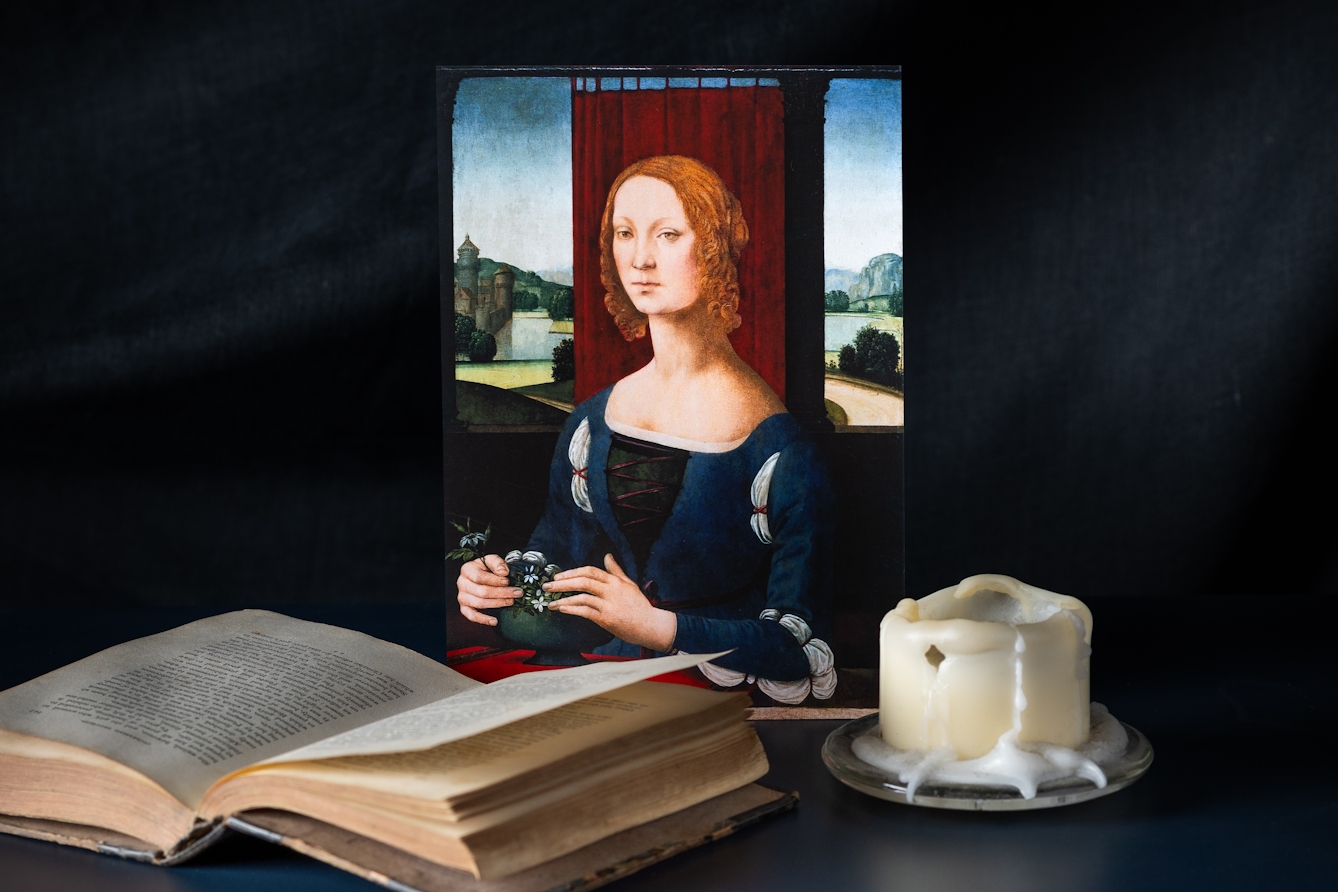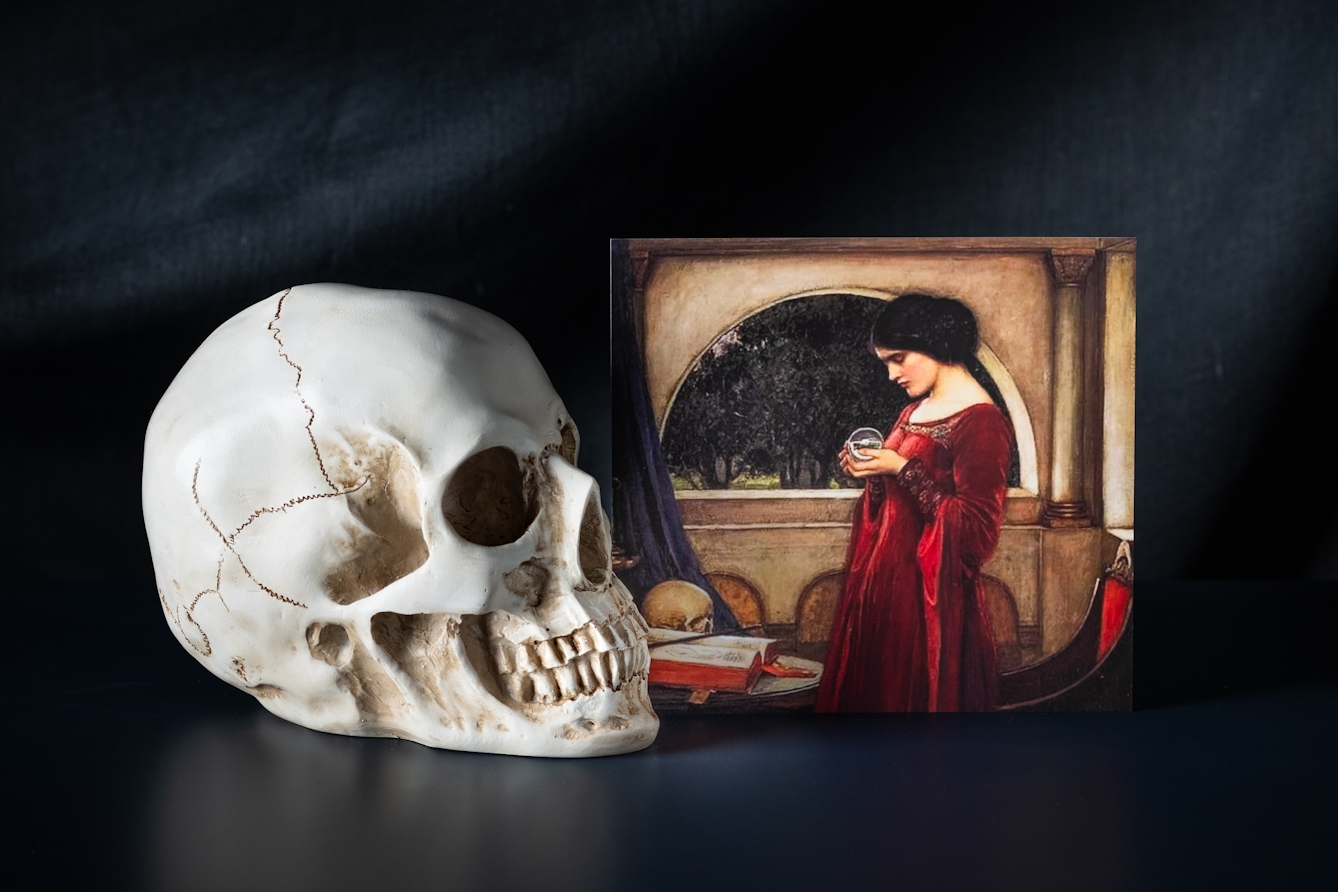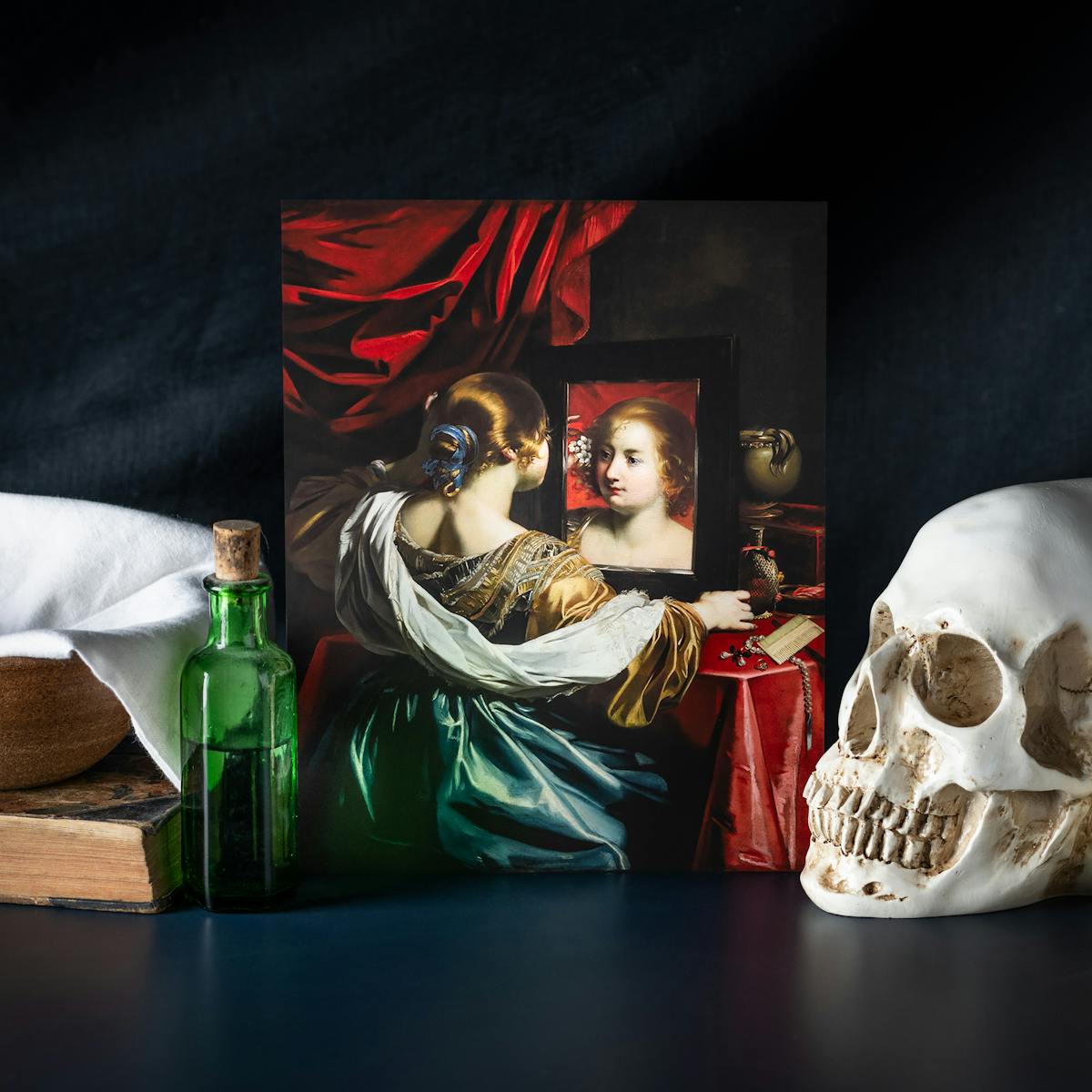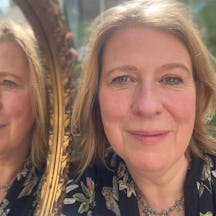The Renaissance was an era obsessed with appearances, and beauty culture from the time offers a window into an overlooked realm of history. In ‘How to be a Renaissance Woman’, Professor Jill Burke reveals everything from 16th-century women’s body anxieties to their sophisticated botanical and chemical knowledge. In this abridged extract from the book, Jill delves into a complex world of beauty products, poison and patriarchy – and uncovers the impossible contradictions of femininity in Renaissance Italy.
Renaissance women and their killer cosmetics
Words by Jill Burkephotography by Steven Pocockaverage reading time 9 minutes
- Book extract
On 26 April 1549, a 27-year-old mother of five, Prudenza da Trani, was publicly executed. She was beheaded on a specially erected platform next to the church of Sant’Apollinare in Florence, just across from the Bargello, then the civic prison.
An entry in the archives of the Confraternity of Santa Maria della Croce al Tempio – the company tasked with assisting those condemned to death – noted her crime: “Through devilish instigation, and perhaps urged by some person of ill repute because of her beauty and grace, she gave poison to her husband, and he died.”
Prudenza’s story opens the door to a world of beauty and murder, make-up and poison – and the impossible contradictions of femininity in the Italian Renaissance.
The imagined lament of this beautiful young wife who killed her husband became a popular pamphlet, repeatedly printed in many Italian cities over the next century. The verses make much of the sharp juxtaposition between beautiful surfaces and frightening depths, stressing not only how worldly beauty means little when your head is chopped from your “white torso”, your graceful face covered in blood, but also that the head of justice cannot be turned, as it can see the truth below, the substance under the skin.
“You would not believe that such beauty lacked help in strength or favour, but the justice of the high lord showed little favour to my beauty,” the condemned woman is made to say.
The relationship between beauty and poison was not just metaphorical. According to the trial documents, Prudenza’s husband, Matteo Cecchi, had died in January that year, seemingly of natural causes.
It was only through the chance discovery of a letter that the truth emerged – Prudenza had poisoned her husband with arsenic procured from an old associate from Ancona, a shady figure known only as Pacifico the perfumer. The letter suggested that she intended to use the arsenic to “medicate the heads of her children”.
Arsenic was just one of several toxic ingredients found in Renaissance skincare, commonly used as a topical insecticide for bugs like scabies and lice. It was also occasionally used as an ingredient in skin-whitening creams, such as Caterina Sforza’s complex recipe of around 1500 for a “most excellent water that makes the face, throat, neck, chest and hands of women white and otherwise well coloured”. It was derived from orpiment, which was a standard ingredient in hair-removal creams, alongside quicklime.

‘Ritratto di Caterina Sforza’ (c. 1463–1509) by Lorenzo di Credi.
The use of these clearly harmful ingredients can seem odd to a modern audience, and it’s easy to play a history of Renaissance cosmetics for laughs – to chuckle at these foolish women in the past who died for their vanity!
It is often assumed that women used poisonous ingredients without understanding that they were toxic. However, this is a misogynistic trope that has circulated since Classical times and was repeated in the Renaissance, including by physicians trying to sell their cosmetic-recipe collections and in popular books aimed at suppressing women’s freedoms.
Renaissance women knew that some of their cosmetic ingredients were poisonous but used them anyway. And Prudenza da Trani was not the only one to use make-up as a deadly way out of a marriage.
The Aqua Tofana murders
In early modern Rome, the authorities did not grant divorce readily. The terrible experience of some women at the hands of their relatives can be glimpsed in one of the most notorious criminal trials of the early modern period – the Aqua Tofana murders. The testimonies of many poor women interrogated in these trials also give us an unparalleled insight into how communities of women at the time supported each other by sharing cosmetic (and other) ‘secrets’.
In 1659, a woman named Marta Buzzi Coli confessed to her local priest that she was thinking about killing her husband. Two friends of hers had managed to get hold of some poison and had successfully murdered their husbands without being detected. The priest went to the authorities, who offered Marta immunity in return for information.
Using undercover detectives and a sting operation, the police managed to capture five women. They were all accused of selling poison to a group of female acquaintances over the previous five or so years, a successful business that was convincingly linked to the murder of 46 husbands.
The true number of men killed by this poisoning network is not known, but the Mantuan ambassador speculated that as many as 500 men were finished off by their wives.
The true number of men killed by this poisoning network is not known, but the Mantuan ambassador speculated that as many as 500 men were finished off by their wives, their deaths unnoticed in the wake of the recent plague.
The extraordinary stories of these ordinary women highlight the reality of the daily lives of people who normally don’t make the history books, and considers their friendship networks, their conversations, their troubles. The whole thing started, according to evidence from one of the poison suppliers, Graziosa Farina, because women often got together to chat about their marriages:

‘The Crystal Ball’ (1902) by John William Waterhouse.
“As we women normally do, [my companion] started talk to me about what women go through with their husbands, and how their men disgust them. And I told her that I also had a wayward husband and that I had undergone many woes and that he had reduced me to misery.”
One of the women accused of murder had talked to her female neighbour about the problems she had with her husband, Andrea. “She replied to me ‘this is the way that men are made,’ and similar things as women usually say.”
These women were powerless and stuck in marriages with dreadful men. Sometimes their husbands were just drunk and feckless – one of the witnesses comments, “I didn’t know how to survive because my husband just lingered about and earned absolutely nothing so that I was reduced to a wretched state.”
Others, however, reveal the amount of violence women had to put up with, not just from their husbands, but from their fathers, brothers, sons-in-law. This was violence on a regular basis that they could do little to avoid. The murderers tended to be in desperate situations, like Anna Maria Conti who, at 19, was married off for the second time to a French painter twice her age called Simon Imbert, who repeatedly beat her:
“Although I was pregnant with Simon’s child, he threatened to knife me, even with the baby I was carrying. Once he laid hands on my throat so violently to strangle me that he left bruises, and went after me with a naked sword. He would have killed me, too, if certain gentlemen, my neighbours on Via della Croce, hadn’t been around and called the police.”
She gradually poisoned Simon with the ‘water’ supplied to her by an intermediary and he died in considerable pain. For some murderers, the risk of execution was worth it – one of the poison sellers exclaimed, on seeing her friend’s badly bruised face: “Better to get yourself hanged! Better to suffer that single torment than so many: every day you’ll end up just like you are today!”
A network of poisoners
The woman at the centre of the poisoning network was Giovanna de Grandis. Her main income was as a cavamacchia, someone who removed stains from clothes. Giovanna was friends with a Sicilian widow called Girolama Spana, who had learned the recipes for the poison from her stepmother.
Women of this kind often show up in the criminal archives, either widowed or simply abandoned by their husbands, often with children in tow; they were poor and skirted on the edge of destitution. They worked as laundresses, sellers of ‘secrets’ – cosmetics, love charms, magic – or as procurers for younger women.
Aqua Tofana was made of ground arsenic and lead, boiled together – familiar ingredients and processes for many different types of make-up and skincare remedies. These women were able to attain and share the poisons by pretending they were using them for cosmetic purposes.

‘Manna di San Nicola, Aqua Tofana’ (1886) by Pierre Méjanel.
Giovanna originally bought the arsenic via a friend’s husband, explaining to him that they needed it to make “aqua bella” to beautify their complexions. She told the police that the vial she had sold to another suspect in fact contained “liquid tooth polish, sealed with white wax”. When the authorities seized another woman who had bought a bottle of the poison from Giovanna, she feigned ignorance: “The liquid is meant to remove blemishes from the complexion – that’s what the woman who gave it to me said.”
But the game was up and in July 1659 five of the women were hanged on the Campo de’ Fiori – Girolama Spana, Giovanna de Grandis and Maria Spinola for making and selling the poison; Graziosa Farina and Laura Crispolti just for selling it. A sixth woman fled to Naples and was hanged there the following year. Three women who had killed their husbands were granted impunity in return for their detailed witness accounts. Anna Maria Conti was one of them.
Renaissance women have too long been mocked by posterity for their use of poisonous cosmetics, but their relationship to these toxic substances should be understood in the context of their often desperate social circumstances.
The use of poisonous make-up may have had more to do with the intolerable lives that many Renaissance women had to suffer, living under a constant threat of violence, public humiliation and destitution if their husbands abandoned them. Cosmetics, however hazardous, could offer the illusion of control to women who needed to attract their husbands back into their beds.
Although the Aqua Tofana murders are exceptional in the historical records, it’s tempting to speculate that these recorded crimes are just the tip of the iceberg – perhaps there are many other, undetected examples of wives slowly murdering their abusive husbands with make-up.
‘How to be a Renaissance Woman’ is out now.
About the contributors
Jill Burke
Professor Jill Burke is Chair of Renaissance Visual and Material Cultures at the University of Edinburgh. She has published widely on the history of art, gender and the body. She is currently Principal Investigator of a Royal Society-funded project, Renaissance Goo, working with a soft-matter scientist to remake 16th-century cosmetic and skincare recipes. She was on the curatorial team of ‘The Renaissance Nude’ exhibition at the J Paul Getty Museum and the Royal Academy, London in 2018–19. Her first book, ‘Changing Patrons’, questions the motivations behind Italian Renaissance art patronage and her second, ‘The Italian Renaissance Nude’, was nominated as a Choice Outstanding Academic Title in 2019.
Steven Pocock
Steven is a photographer at Wellcome. His photography takes inspiration from the museum’s rich and varied collections. He enjoys collaborating on creative projects and taking them to imaginative places.


